The first .416″ diameter bullets saw the light of day in 1911, in John Rigby & Company’s proprietary cartridge, the .416 Rigby. The case that Rigby designed was huge, capable of holding well over 100 grains of today’s powder.
It was initially loaded with cordite, the popular propellant of the day in early twentieth-century Britain, and a large ring Mauser receiver was necessary to house the voluminous case. Truth be told, the bullet diameter and cartridge didn’t catch on immediately.

It sort of clambered along, despite being praised by John ‘Pondoro’ Taylor in his famous African Rifles and Cartridges. The .416 Rigby and all of today’s .416″ diameter bores owe their sustained existence to Robert Ruark’s 1953 safari gem Horn of the Hunter, in which he documents Professional Hunter Harry Selby’s proficiency with the left-handed .416 Rigby he was using because his double .470 Nitro Express was in the repair shop. Hunters quietly collected the .416 Rigby, and even Jack O’Connor, renowned for his love of lighter, speedier cartridges, used one with great effect in Africa.
However, the 1960s saw the demise of Kynoch ammunition, which produced most of the ammunition for the British classic cartridges, and that created a serious problem: many cartridges that were most useful against African dangerous game were simply unavailable. The .450 Nitro-Express, the king of the doubles, began to fade quickly, as did many of the other flanged double rifle cartridges.
The American firm of Winchester answered the call (at least in theory) by developing the .458 Winchester Magnum. Designed to propel a .458″ diameter 500-grain projectile at 2,100 fps., in a case based on the .375 Holland and Holland Belted Magnum shortened to 2.500″, they intended to mirror the performance of the .450 Nitro. The cartridge did that. Well, almost. Initial reports didn’t bode well, but I believe that had more to do with the ammunition than the design. I will go on record saying that the .458 Winchester suffers from a lack of case capacity, but some of our modern powders have solved that problem.
This left hunters of the 70s and even 80s with two affordable choices for a big game rifle: the .375H&H and the .458 Winchester. While both of these are irrefutable classics, the difference between them left a gap. The .375 H&H has a milder recoil than the .458, but it is traditionally loaded with 300-grain bullets as the heaviest available. The .458 has the bullet weight on its side, but comes at the price of heavy recoil; so heavy that few visiting hunters could effectively shoot it well, and numerous PHs recommended sticking with the .375 bore.
Wildcatters started to tinker with the .416″ diameter bullets in different cases. My friend Enrique adores his .416 Taylor, which is a .458 Winchester case (2.500″ long) necked down to hold the .416 bullet, and it is a great cartridge, yet remains a wildcat. Developed in the 70s by Robert Chatfield-Taylor, it is a .30-’06 length .416 that is fully capable of taking all dangerous game. Likewise, a forward-thinking gentleman by the name of George Hoffman, one of the few American Professional Hunters in Africa, had the brilliant idea of mating the full-length .375 H&H case with the .416″ diameter bullets, and thank goodness he did! The wildcat .416 Hoffman was born.
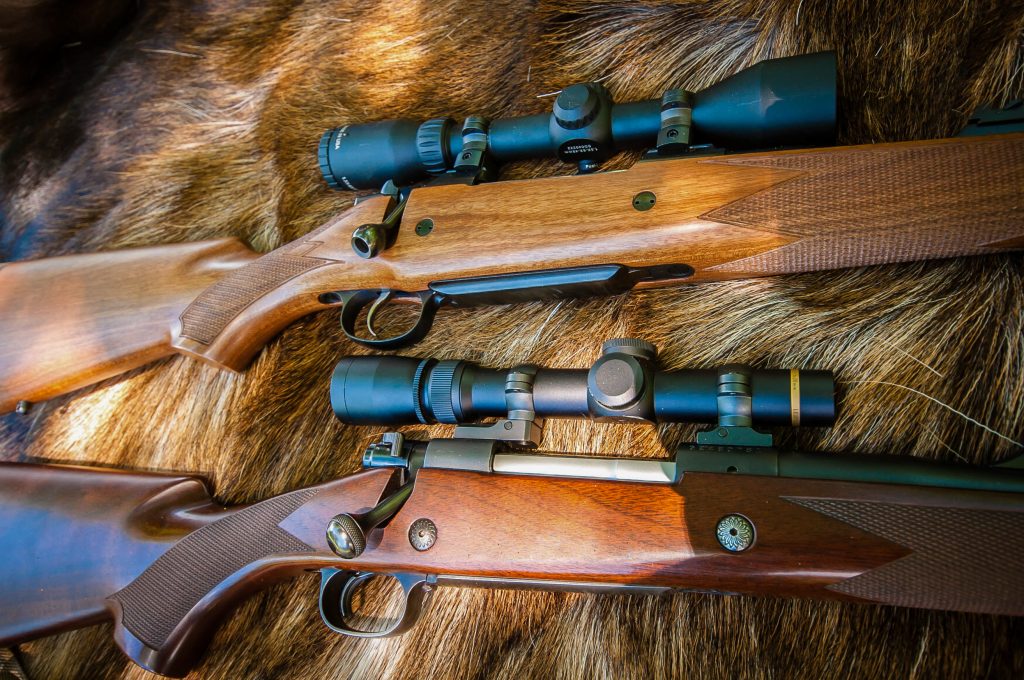 It propelled the 400 and 410-grain bullets of the .416 Rigby to a velocity of 2,400fps., exactly on par with Rigby ballistics, yet out of a simple-to-manufacture rifle using a very common case head diameter and length. The .375 Holland uses a case length of 2.850″, plenty long enough to give ample capacity for driving .375″ 300-grain bullets to their famed velocity of 2,550fps., but change the bore diameter to .416″ and case capacity is just about maxed out. The good Mr. Hoffman had excellent results with his brainchild, having no lack of killing power or penetration on the toughest and biggest game that Africa has to offer. However, his wildcat remained just that: a wildcat that few people embraced. It was and still is, a perfectly viable cartridge. I have clients who ask me to load .416 Hoffman for them, and they enjoy using their rifles to this day.
It propelled the 400 and 410-grain bullets of the .416 Rigby to a velocity of 2,400fps., exactly on par with Rigby ballistics, yet out of a simple-to-manufacture rifle using a very common case head diameter and length. The .375 Holland uses a case length of 2.850″, plenty long enough to give ample capacity for driving .375″ 300-grain bullets to their famed velocity of 2,550fps., but change the bore diameter to .416″ and case capacity is just about maxed out. The good Mr. Hoffman had excellent results with his brainchild, having no lack of killing power or penetration on the toughest and biggest game that Africa has to offer. However, his wildcat remained just that: a wildcat that few people embraced. It was and still is, a perfectly viable cartridge. I have clients who ask me to load .416 Hoffman for them, and they enjoy using their rifles to this day.
Remington, a company that has made a reputation out of legitimizing the bastard children of the shooting world, picked up on the Hoffman concept. In 1988, the year I graduated high school, I remember the buzz about Remington’s new baby: the .416 Remington. Based (loosely) on the 8mm Remington Magnum (which was a derivation of the .375H&H), the new Remington case bears a very strong resemblance to the .416 Hoffman. They are so close in dimension that .416 Remington ammunition can be safely fired from the slightly larger .416 Hoffman chamber, but the reverse is not true. The Hoffman case has a slightly larger case capacity than the Remington variety. This commercially produced cartridge closed the gap by blending the trajectory of the .375 H&H with the high kinetic energy of the .458 Winchester.
Ballistics are virtually identical between the Hoffman and the Remington; both drive 400-grain bullets at a speed of 2,400fps. What Remington does differently is use roughly 80% of the powder charge required for the Rigby. My .416 Remington, which is a bolt action Winchester Model 70, uses 78.0 grains of powder to arrive at 2,400 fps., while my .416 Rigby needs an even 100 grains to get to the same velocity. This is simply explained, and both have their benefits and downsides. Allow me to compare and contrast for a bit.
The new Remington design uses a 25-degree shoulder and headspaces off the belt; the Rigby case is beltless and headspaces off the steep, almost 45-degree shoulder. The Rigby case, designed for and developed with cordite, a powder made in long, spaghetti-like sticks, was designed to be so large to combat the high pressures that the tropics can generate. I should note that the extreme heat of the African tropics has a much, much more pronounced effect on cordite (now completely obsolete) than it does on our modern smokeless extruded single and double-based powders. In 1911, with only cordite available, John Rigby and Co. designed the .416 Rigby to be overly huge so that the temperature variant wouldn’t give any trouble while extracting a cartridge. Having a cartridge stuck in the chamber while facing a charging elephant or buffalo is a great way to destroy a company’s reputation!
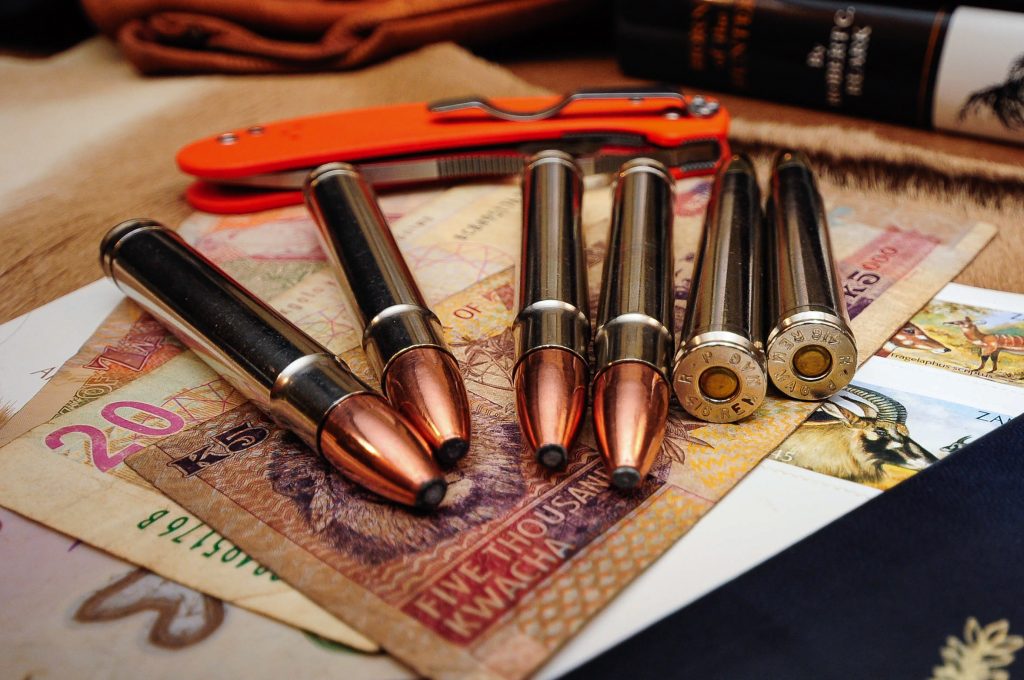
The designers at Rigby solved the high-pressure problem by using an oversized case, and to this day the Rigby case operates at a much lower pressure than the Remington case does. But, that lower pressure comes at a cost.
With today’s powders, when you have to fill a case as large as the Rigby to get the necessary velocity, the felt recoil ramps up accordingly. Because the Remington case uses roughly 80% of the powder that the Rigby does, the felt recoil drops off significantly.
To get the same velocity out of 80% of the powder, the Remington case must run at a higher pressure. That pressure was the initial criticism of Remington’s .416, but in my humble opinion, the blame should have been laid at the feet of Remington’s Model 700 rifle instead of the design of the cartridge. You see, the Remington 700 action utilizes the “push-feed” design; that is the cartridge is not picked up by the bolt as is the case in a Mauser-style action, it is simply pushed out of the magazine and upon closing the bolt a small spring loaded extractor grabs the cartridge case head by the rim. The dilemma?
When you get a case that runs at high pressures, that tiny extractor can show itself as the weak link in the chain. Horror stories reared their ugly head. A PH stands helpless as a buffalo charges, the cartridge stuck in the chamber and the extractor ripped off of the bolt face. Once the rot sets in, it is very difficult to right the ship. But, the .416 Remington continued to defeat the odds by performing perfectly in rifles equipped with a controlled round feed setup, like the classic Mauser design or the Winchester 70 and Dakota Model 76. In these rifles, pressure isn’t a problem and extraction happens every time.
To be honest, I feel that any rifle that is headed for use in a dangerous game country should have the strongest extractor possible. I know, the fans of Weatherby and Browning rifles are making little bald voodoo dolls of me, and I understand the point that they very seldom fail. I also understand that problems can arise in controlled round feed rifles. But, I sleep better knowing I’m headed afield with the strongest gear available, to hedge my bets against failure or a tragedy.
My favorite rifle for dangerous game situations is the aforementioned Winchester Model 70 .416 Remington in the Safari Express configuration, which I’ve nicknamed ‘Cocoa’ due to the dark-stained stock, and it is equipped with the controlled round feed “pre-‘64” claw action. I have left ammunition in 95-degree Fahrenheit heat all afternoon, and never had a problem with a stuck cartridge. My handloads operate at the same velocity as the factory stuff (400-grain bullets at a measured 2,400 fps), and I’ve yet to have an issue with them either.
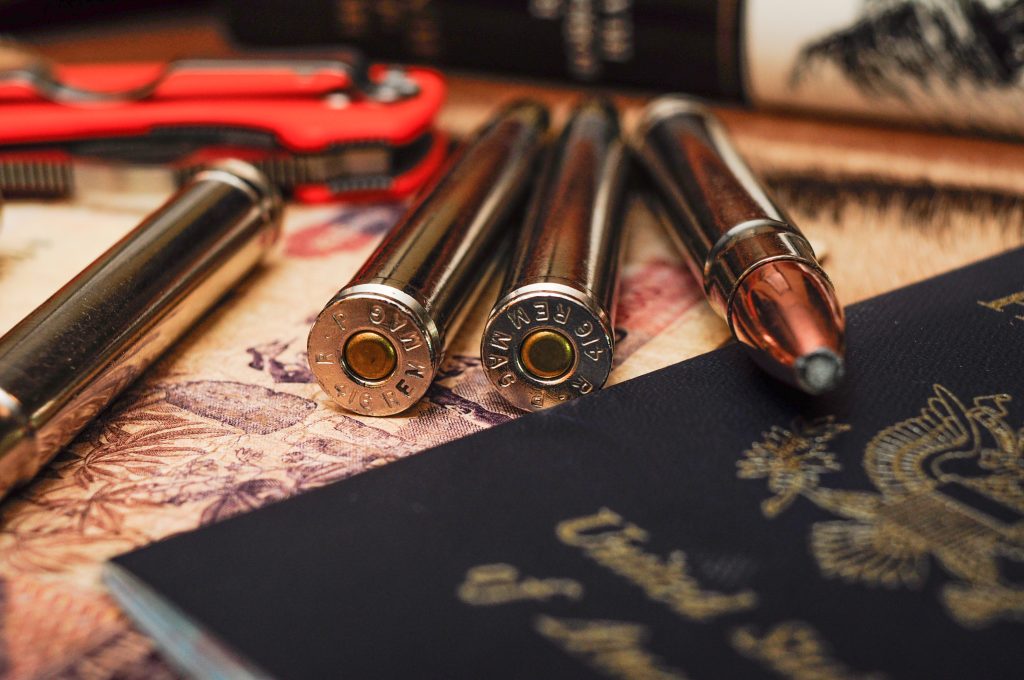
So, where exactly does the .416 Remington fit? Is it a flexible rifle like the flat shooting, easy recoiling .375 H&H but beefed up? Or is it on the bottom end of the stopping rifles? The answer, in my opinion, is yes to both questions. Or, perhaps better put, it is a wonderful compromise between the two.
Almost all available factory ammunition is loaded with a 400-grain bullet of some variety, which has a good sectional density of .330, perfect for deep penetration on dangerous game. It is generally accepted that the best bullets for dangerous game have a S.D. of greater than .300, so penetration doesn’t suffer. When comparing it against of bullets of similar nose profile, using the 300-grain in the .375, and the 500-grain in the .458, you’ll find that the 2,400 fps muzzle velocity of the .416 Remington generates 5,116 ft.-lbs. of energy at the muzzle. Compare this to the .375’s 4,250 ft.-lbs and the .458’s 5,084 ft.-lbs.
As you can see, the Remington has either equaled or beat the competition. However, at 300 yards (which is as long a shot as many will ever attempt with this sort of rifle) the .416 Remington has retained 2,500 ft.-lbs., while the .375 has 1,875 ft.-lbs. and the .458 has 2,267 ft.-lbs. So it seems that in terms of energy, the .416 Remington has an advantage over the .375 H&H and is on par or slightly better than the .458 Winchester Magnum.
When it comes to trajectory, the lighter and faster .375 H&H bullet has an advantage over its larger and heavier counterparts. But, the advantage is not as much as you’d think with respect to the .416 Remington. Using a 100-yard zero for comparative purposes, the fastest of the three, the .375 H&H drops 18″ at the 300-yard mark, the .416 Remington drops 22″ and the .458 Winchester drops 30″. The .416 bullet is only 4″ lower at 300 yards. That’s not a huge difference at all!
What we have here in the .416 Remington is a relatively flat shooting cartridge, fully capable of making a distant shot on a kudu or gemsbok, yet perfectly able to confidently drop a buffalo or elephant when things get up close and personal.
So, here we are with 5,000 ft.-lbs. of energy in our hands, with the capability of reaching out to 300 yards and beyond confidently. How does it translate into the real world? What real-life scenarios can be related to confirm the performance of the .416 Remington?
I’m glad you’ve asked. My first safari, in The Republic of South Africa, saw me afield with a .300 Winchester and a .375 H&H Magnum. It was a Plains game safari, with no real threat of bumping dangerous game, except for the gigantic white rhino that scared the wits out of me on day two. Things went swimmingly, and I was invariably hooked on Mother Africa. I rebooked for a Cape buffalo hunt in the Selous of Tanzania, and upon arrival, PH Terry Calavrias, my Dad and I set off for a week of fun. I had won a raffle for a rifle and chose the .416 Remington in a Winchester Model 70, and was very eager to try it out. I had settled on the 400-grain Swift A-Frame bonded-core soft point for my handloaded ammunition, and my pet rifle would (and still will) put three shots in a group that measured less than one inch at 100 yards. I chose some of Hornady’s 400-grain solids for backup, which printed similar groups, and was feeling confident about hunting the great black beasts. True hunting comes with no guarantees, and the buffalo I wanted didn’t present himself.
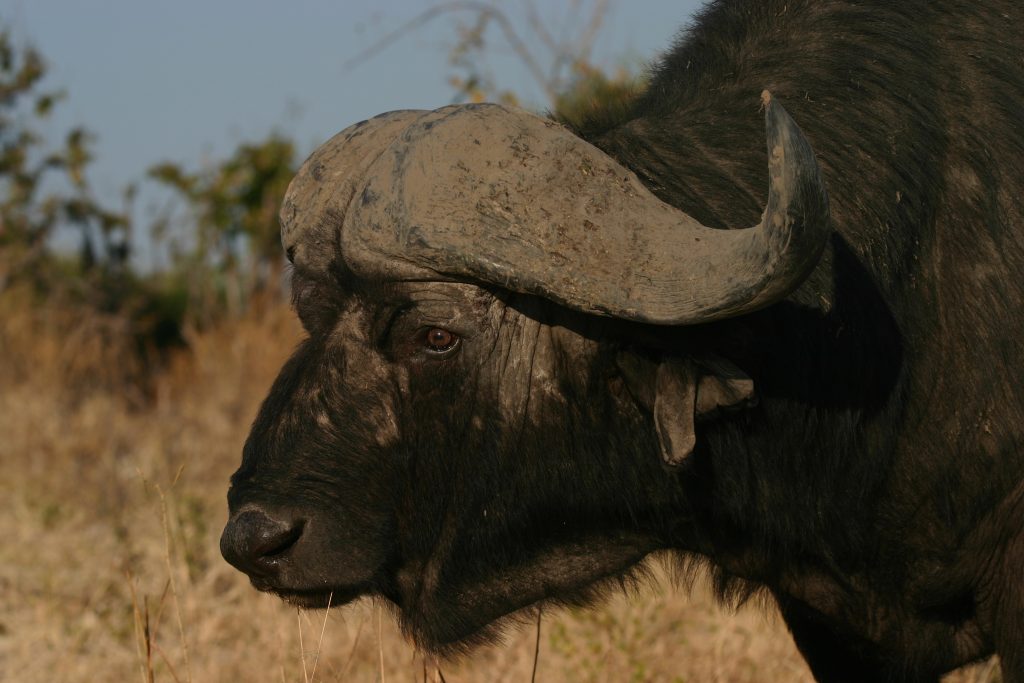 We saw hundreds of them, but that old hard-bossed bull eluded me in Tanzania. However, I did get an opportunity to test the accuracy potential of this big stick. A very fine Lichtenstein’s hartebeest bull was feeding on the far side of a pan of water, just over 300 yards away, while we were checking for spoor one morning. Terry was confident I could take the bull, so I laid down across a log, settled into the rifle, and after a few unprintable words of encouragement from Dad, tickled the trigger. I had the proper holdover, and the bull was in the salt! Not bad for such a large rifle with only a 5x scope.
We saw hundreds of them, but that old hard-bossed bull eluded me in Tanzania. However, I did get an opportunity to test the accuracy potential of this big stick. A very fine Lichtenstein’s hartebeest bull was feeding on the far side of a pan of water, just over 300 yards away, while we were checking for spoor one morning. Terry was confident I could take the bull, so I laid down across a log, settled into the rifle, and after a few unprintable words of encouragement from Dad, tickled the trigger. I had the proper holdover, and the bull was in the salt! Not bad for such a large rifle with only a 5x scope.
It took me four years to get back to the Dark Continent, and this time it was my honeymoon. I had decided to explore Zambia’s Luangwa Valley, as the area has a great reputation for buffalo. It took a bit to convince my bride that venturing off on a hunting safari was definitely what the cool kids were doing, but I sweetened the pot with three days at Victoria Falls and got her to agree. Upon arrival in camp, my new friend and PH Nicky Wightman was enamored with my .416, because it drilled the bullseye while checking the zero. This usually pleases professional hunters!
The next morning we cut buffalo spoor early, and after a tracking job of over three miles, we found the herd. The bull I was after took a bit of time to present the shot, but when he did that Remington cartridge showed it true colors. The bull rocked at the shot, which hit him on the very point of the front shoulder, and carried on to the heart and lungs. He didn’t go more than 50 yards, but I still paid the insurance with a backup shot. Both bullets were found resting against the offside skin, retaining over 90% of their weight, and perfectly mushroomed. My bull was in the salt on day one, and my wife got to experience the entire hunt alongside me. Priceless! The .416 Remington did its job flawlessly, and I couldn’t have chosen a better rifle/cartridge/bullet combination.
That safari also saw several heads of plains game fall to the .416 Remington and the 400-grain Swift A-Frame. Let me explain a bit: when I go hunting in a dangerous game block, where the presence of elephants, buffalo, hippos, and cats is not just possible but probable, I hunt everything with a rifle capable of getting me out of a scrape. My .416 Remington has been the only rifle I’ve brought with me on safari to Tanzania and Zambia. The performance on Plains game, when using the proper bullet, has been stellar.
The great thing about those Swift bullets is that they are very versatile. When they hit large game, like Eland or Cape buffalo, the size of the animal forces the bullet to expand and mushroom. On smaller game, like Bushbuck or Impala, they tend to whistle through, acting much like a solid. The kill is quick and humane, but meat damage is minimal. Pretty good tradeoff if you ask me. A Chobe bushbuck dropped as if poleaxed, with an exit wound smaller than a fifty-cent piece. My warthog was hit on a dead run, with what is the best offhand running shot of my career. Trackers, game scout, driver, and crew came jumping off the truck when they saw the shot that flipped that hog into midair, and landed him on his back in a cloud of dust, dead before he landed! The congratulations in Nyanja and handshakes from gentlemen who see all sorts of shooting caused me to walk away with an unprecedented sense of pride.
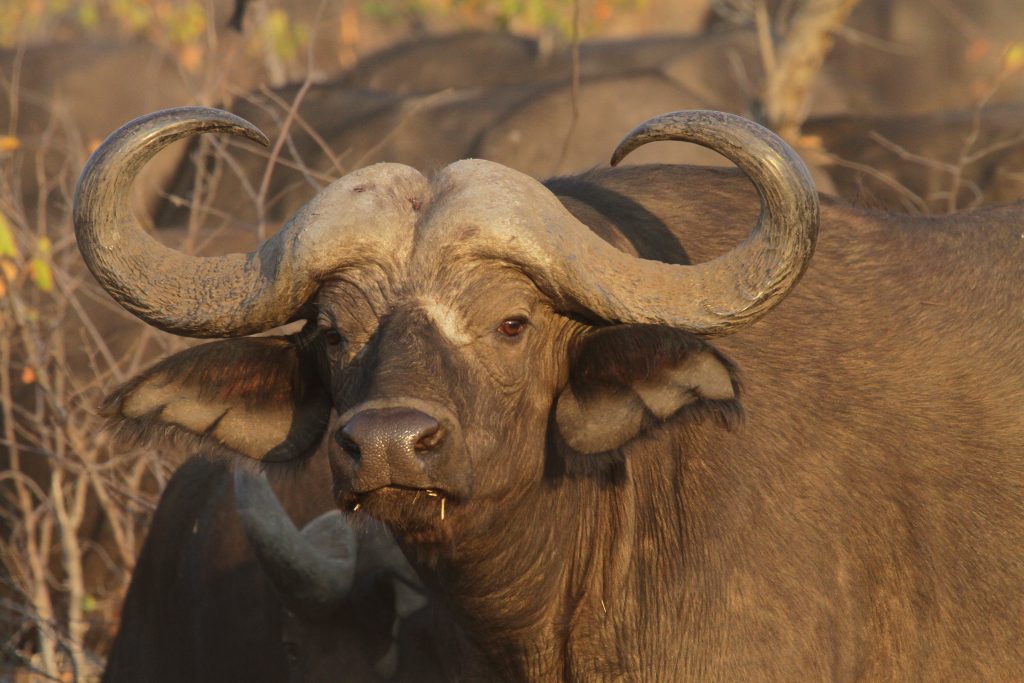
There are many good, even great bullets available to the shooter who likes the .416 bore. The aforementioned 400-grain Swift A-Frame has served me well, but Hornady’s new line of DGX soft points and DGS solids is a great choice as well. The Barnes TSX is available in .416″ diameter, in 400-grain, 350-grain, and 300-grain for those who want to increase speeds and flatten trajectories. Barnes’ lines of banded solids have long proven themselves, and any .416 shooter would be well served when armed with a 400-grain Banded Solid. Nolser’s famous Partition is offered in a 400-grain configuration for those who enjoy using the classic premium bullet design, and Nosler has a great solid for backup shots. Northfork has their wonderful bonded-core semi-spitzer, and a line of flat point solids (designed for elephants and other pachyderms), and the new cup point solids, designed as a backup shot on buffalo. The cup solid will give a small amount of expansion on the front end of the bullet while giving the very deep penetration of a traditional solid bullet. These are just about perfect for the buffalo hunter.
Woodleigh Weldcore bullets have a great reputation on the Dark Continent and are available in .416 diameter. Their new “hydrostatically stabilized” solids are a new and interesting concept, being constructed of solid brass. I haven’t had a chance to experiment with them yet, but my colleagues report good results.
Cutting Edge Bullets, from Pennsylvania, USA, has a line of all brass hollow points that should prove themselves in the .416 Remington. Turned on a lathe and held to very tight tolerances, my experiences with these bullets have been very good. As with any monometal bullet, they are longer than their lead and copper counterparts, so bullet weight tends to be lower than standard. The 370-grain Cutting Edge would be a great choice for the traveling sportsman.
The .416 Remington works best when loaded with a medium-burning powder, such as IMR4064, Varget, or Reloder15. Good cases are available from Hornady, Remington, Norma, and others. Should you opt for factory-loaded ammunition, the popularity of the .416 Remington has resulted in many good factory loads. Federal, Hornady, Norma, Remington, and others offer good ammunition with good choices of projectiles, which can serve you well the whole globe over.

